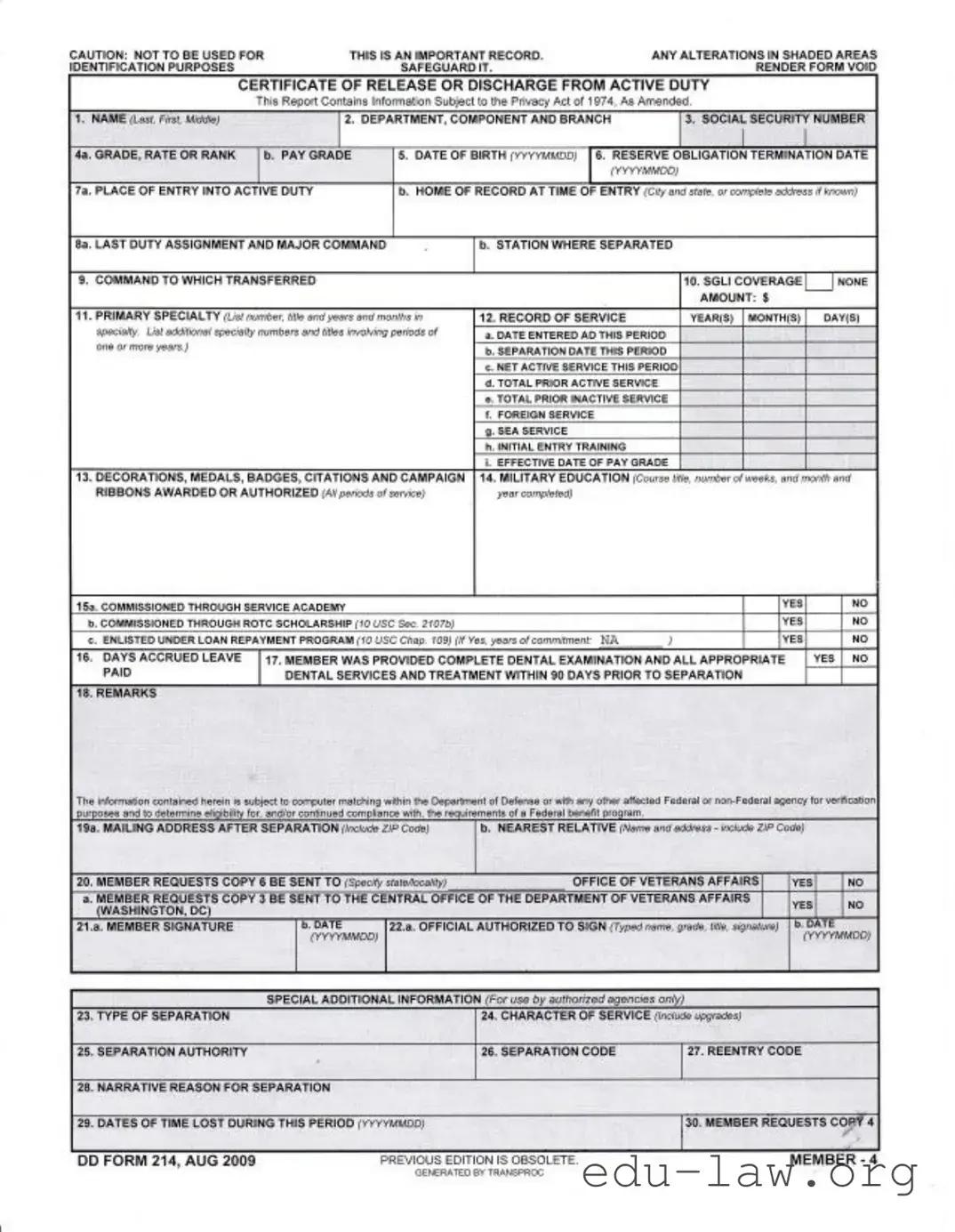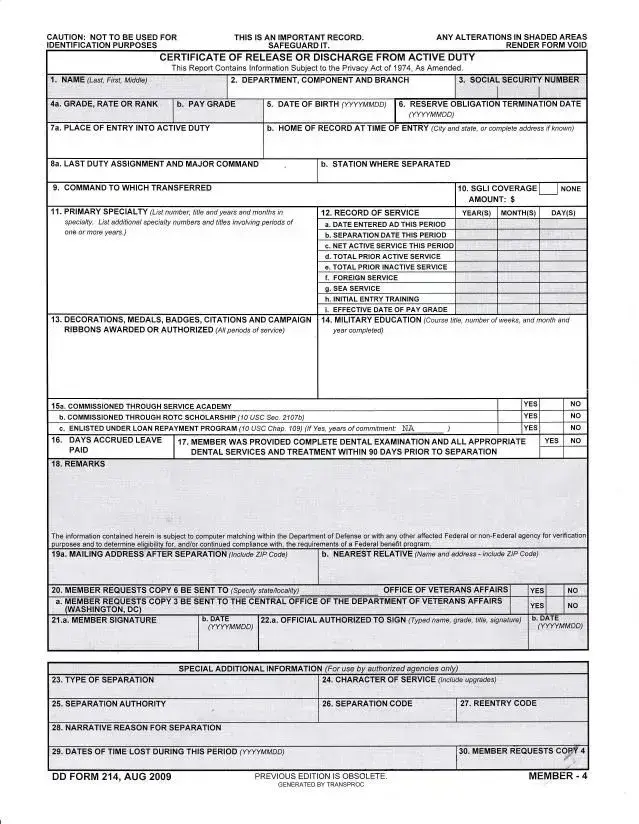Misconception 1: The DD 214 form is only for veterans who served in combat.
Many believe that this form is exclusive to combat veterans. In reality, it's a document for all service members who complete active duty, regardless of their deployment status.
Misconception 2: You can use the DD 214 as a form of identification.
Some think the DD 214 can serve as identification. However, it’s important to note that this form is not meant for identification purposes, and other forms of ID should be used instead.
Misconception 3: The DD 214 is a permanent record that cannot change.
Many believe that once issued, the details on a DD 214 are set in stone. This is not the case. If there are errors, they can be corrected through the appropriate channels.
Misconception 4: The DD 214 shows only your military service.
Some think the DD 214 only lists military service. While it does include service details, it also contains personal information like your rank and awards.
Misconception 5: You don’t need a DD 214 to access veteran benefits.
This is false. The DD 214 is typically required to prove your military service when applying for benefits and other services for veterans.
Misconception 6: You must request a DD 214 immediately after leaving the military.
While it’s useful to obtain your DD 214 soon after separation, you can request it later. The process may take time, so it’s good to keep that in mind.
Misconception 7: The DD 214 is easy to replace if lost.
Although you can get a replacement, many might not realize that it requires submitting a request to the National Archives, which can take several weeks.
Misconception 8: The DD 214 is only important for those seeking employment.
This form holds importance for various reasons, including applying for housing, education benefits, and medical care, not just for job applications.
Misconception 9: There is only one type of DD 214.
Many think there's only one edition of the DD 214. In fact, there are different versions depending on the service member's circumstances, such as active duty, reserve, or retirement.

